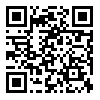

Volume 4, Issue 1 (9-2018)
FPJ 2018, 4(1): 17-32 |
Back to browse issues page
Download citation:
BibTeX | RIS | EndNote | Medlars | ProCite | Reference Manager | RefWorks
Send citation to:



BibTeX | RIS | EndNote | Medlars | ProCite | Reference Manager | RefWorks
Send citation to:
Keshavarz Mohammadi R, khalatbari J. Effectiveness of self-compassion on distress tolerance, emotion regulation and anxiety sensitivity in divorced women. FPJ 2018; 4 (1) :17-32
URL: http://fpcej.ir/article-1-170-en.html
URL: http://fpcej.ir/article-1-170-en.html
1- Ph.D. Student, Islamic Azad University, Tehran North Branch, Tehran, Iran , Simakeshavarz45@gmail.Com
2- Associate Professor, Islamic Azad University, Tonekabon Branch, Tonekabon, Iran
2- Associate Professor, Islamic Azad University, Tonekabon Branch, Tonekabon, Iran
Abstract: (10097 Views)
The present study was conducted to investigate the effectiveness of self-compassion treatment on distress tolerance, emotion regulation and anxiety sensitivity in divorced women. It was a quasi-experimental study with pretest, posttest and control group design. The statistical population of the present study all divorced women referring to consultation centers in the city of Tehran in 2017. Non-probable voluntary sampling method and random replacement were used in the present study in a way that 30 people were voluntarily selected and replaced into experimental and control groups. The experimental group received eight ninety-minute sessions during two months while the control group didn’t receive this intervention during conducting the study. The applied questionnaires in the study included emotion cognitive regulation strategies (Garenfski et.al, 2002), emotional distress tolerance scale (Simons and Gaher, 2005) and anxiety sensitivity questionnaire (Floyd, Garfield and Marks, 2005). The data from the study were analyzed through Ancova method via SPSS23 software. The results of data analysis showed that self-compassion treatment has been effective on distress tolerance (f=28/87, p<0/0001), positive emotion regulation (f=41/47, p<0/0001), negative emotion regulation (f=52/79, p<0/0001) and anxiety sensitivity (f=58/28, p<0/0001) in divorced women. According to the findings of the present study, self-compassion treatment can be suggested as an efficient method in order to increase distress tolerance and emotion regulation and decrease anxiety sensitivity in divorced women.
Keywords: Self-compassion treatment, distress tolerance, emotion regulation, anxiety sensitivity, divorced women
References
1. Aberoei, m. (2011). Investigating the predictive factors of divorce in couples in Isfahan. Master's thesis, Faculty of Educational Sciences and Psychology, Isfahan University.
2. Afkhami, A., Bahrami F., Fatehizadeh M. (1386). The study of the relationship between the amount of forgiveness and marital conflict of couples in Yazd province. Quarterly Journal of Family Studies, 3(9), 431-42.
3. Ajam, A., Farzanfar, J., Shokouhi Fard, H. (2014). The Role of Self-Compassion in the General Health and Academic Achievement of the Nursing and Midwifery Students in Mashhad University of Medical Sciences in 2014. Nursing Education Journal, 10 (5): 16-9.
4. Aldao, A., Nolen-Hoeksema, S. (2010). Specificity of cognitive emotion regulation strategies: A transdiagnostic examination. Behaviour Research and Therapy, 48(10), 974-83.
5. Aminalroaya R,. Kazemian S., Esmaeili M. (2016). Forecasting Distress Tolerance on the Base of the Communication Components of Original Family among Divorces and Non-Divorced Women. Journal of Women and Society, 7(4): 91-107.
6. Anestis, M.D., Pennings, S.M., Lavender, J.M., Tull, M.T., Gratz, K.L. (2013). Low distress tolerance as an indirect risk factor for suicidal behavior: Considering the explanatory role of non-suicidal self-injury. Comprehensive psychiatry, 54(7), 996-1002.
7. Atkinson, R. L., Atkinson, R. C., Smith, E. E., Bem, D. J. and Nolen- Hoek Sema, S.(2003). Hilgard's in reductions to psychology, for teenth edit ion. For worth, TX, Harcourt Brance, 395-396
8. Azizi A. (2010). The Effectiveness of Group Dialectical Behavioral Therapy in Preventing Recurrence and Improving Emotional Regulation and Drug Tolerance Skills, Master's Thesis, Allameh Tabatabaei University of Tehran.
9. Azizi A., Mirzaie A., Shams J. (2010). Correlation between Distress Tolerance and Emotional Regulation with Students Smoking Dependence. Hakim Health Sys Res, 13 (1), 11-18.
10. Bahmani, M., Fallah Chai, S., Zarei, A. (2012). Comparison of Equity between Satisfied and Conflicting Couples, Quarterly Journal of Family Counseling and Psychotherapy, 3 (1), 382-398.
11. Bent, S. Goleman, T. (2001). Emotional alchemy: How the mind can heal the heart. New York: Three Rivers Press.
12. Bluth, K., Eisenlohr-Moul, T/A.(2017). Response to a mindful self-compassion intervention in teens: A within-person association of mindfulness, self-compassion, and emotional well-being outcomes. Journal of Adolescence, 57, 108-118.
13. Cougle, J. R., Timpano, K. R., & Goetz, A. R. (2011). Exploring the unique and interactive roles of distress tolerance and negative urgency in obsessions. Personality and Individual Differences, 52(4), 515-520.
14. Cox, B.J., Enss, M.W., Freeman, P., & Walker, J.R. (2001). Anxiety sensitivity and major depression: Examination of affective state dependence. Behaviour Research and Therapy, 39 (11), 1349-1356.
15. Danson, R. (2015). The effect of self-compassion on the resilience and emotion regulation of marital woman. Journal of Personality assessment, 63 (2), 262 - 274.
16. Deminof, L. (2013). The efficacy of self-compassion on the adversity quotient, Emotion Regulation of marital woman. Journal Anxiety Disorder, 2010; 11, 279-315.
17. Elaine, B.C.J., Hollins, M.(2016). Exploration of a training programme for student therapists that employs Compassionate Mind Training (CMT) to develop compassion for self and others. The Arts in Psychotherapy, 22, 5-13.
18. Ellis, A. J., Vanderlind, W. M., Beevers, C. G. (2013). Enhanced anger reactivity and reduced distress tolerance in major depressive disorder. Cognitive Therapy and Research, 37(3), 498-509.
19. Floyd, M., Garfield, A., Marcus, T. (2005). Anxiety sensitivity and worry. Personality and Individual Differences, 38, 1223-1229.
20. Garnefski, N., Van Den Kommer, T., Kraaij, V., Teerds, J., Legerstee, J., Onstein, E.(2002). The relationship between cognitive emotion regulation strategies and emotional problems, Comparison between a clinical and non-clinical sample. European Journal of Personality, 16, 403–420.
21. Hollis-Walker, L., Colosimo, K. (2011). Mindfulness, selfcompassion, and happiness in non-meditators: A theoretical and empirical examination. Personal Individ Differ, 50(2), 222-227.
22. Jafari Nodoushan, A., Zarei, H., Hosseini Henzai, A., Poursalehi Navideh, M., Zeini M. (2015). A Comparative Study of Mental Health, Adjustment, and Cognitive Emotion Regulation among Married Women and Divorcees in Yazd City, Journal of Women and Society, 6 (2): 1-16.
23. Kord B. (2016). Prediction of Nursing Students’ Subjective Well-being based on Mindfulness and Self-compassion, Iranian Journal of Medical Education, 16(34), 272- 282.
24. Kyeong, L.W.(2013). Self-compassion as a moderator of the relationship between academic burn-out and psychological health in Korean cyber university students. Personality and Individual Differences, 54(8), 899–902.
25. Leyro, T. M., Zvolensky, M.J., Bernstein, A. (2010). Distress tolerance and psychopathological symptoms and disorders: a review of the empirical literature among adults. Psychological bulletin, 136(4), 576.
26. Mc Williams, L.A., Stewart, S. H., Mac Pherson, P.S.R. (2000), Does the social concern component of the anxiety sensitivity Index belong to the domain of anxiety sensitivity or negative evaluation sensitivity? Behavior Research and therapy, 38, 985-992.
27. Morin, C.M., Collechi, C., Stone, J., Sood, R., Brink, D. (2015). The effect of self-compassion on the forgiveness, resiliency and marital satisfaction of couples Journal of marital, 7(1), 85-96.
28. Mousavi, F. (2011). Relationship between Anxiety sensitivity and five major factors of personality with academic achievement in high school students in Shiraz. Tehran, Shahid Beheshti University, Master's thesis.
29. Neff, K. D., Kirkpatrick, K. Rude, S. S. (2007). Self-compassion and its link to adaptive psychological functioning. Journal of Research in Personality, 41, 139-154.
30. Pang, R.D., Guillot, C.R., Zvolensky, M.J., Bonn-Miller, M.O., Leventhal, A.M. (2017). Associations of anxiety sensitivity and emotional symptoms with the subjective effects of alcohol, cigarettes, and cannabis in adolescents, Addictive Behaviors, 73, 192–198.
31. Reference in Persian
32. Seyyed Gholami, F., Jafari, A., Qamari, M. (2013). The effectiveness of group counseling in cognitive-behavioral approach in reducing the symptoms of anxiety sensitivity, woman and family studies, 5 (19), 115-132.
33. Smeets, E., Neff, K., Alberts, H., Peters, M.(2014). Meeting suffering with kindness: effects of a brief selfcompassion intervention for female college students. Journal of Clinical Psychology, 70(9), 794-807.
34. Soysa, C.K., Wilcomb, C.J.(2015). Mindfulness, Self-compassion, Self-efficacy, and Genders Predictors of Depression, Anxiety, Stress, and Well-being. Mindfulness, 6(2), 217-226.
35. Tanenbaum, M.L., Adams, R.N., Gonzalez, J.S., Hanes, S.J., Hood, K.K. (2017). Adapting and validating a measure of diabetes-specific self-compassion. Journal of Diabetes and its Complications, 33(10), 1540-1541.
36. Tirch, D.(2012). The compassionate-mind approach to overcoming anxiety: Using the compassion focused therapy (CFT) to treat worry, panic, and fear. American institute for cognitive therapy, 38, 6-29.
37. Wang, X., Chen, Z., Poon, K., Teng, F., Jin, S. (2017). Self-compassion decreases acceptance of own immoral behaviors. Personality and Individual Differences, 106, 329-333.
38. Wren, A., Somers, J., Melissa, AW. Goetz, MC. Leary, MR., Fras, AM., et al. (2012). Self compassion in patients with persistent musculoskeletal pain: Relationship of self-compassion to adjustment to persistent. Journal of Pain and Symptom Management, 43(4), 759-770.
39. Wu, M.S., McGuire, J.F., Storch, E.A. (2016). Anxiety sensitivity and family accommodation in obsessive-compulsive disorder. Journal of Affective Disorders, 205, 344–350.
40. Yarnell, L.M., Neff, K.D. (2013). Self-compassion, interpersonal conflict resolutions, and well-being. Self and Identity, 12(2), 146-59.
41. Yousefi, F. (2006). Investigating the Relationship between Emotional Cognitive Strategies and Depression and Anxiety in Students of Talent Educational Centers, Exceptional Children's Quarterly Journal, 6 (4): 871-892.
| Rights and permissions | |
 |
This work is licensed under a Creative Commons Attribution-NonCommercial 4.0 International License. |



